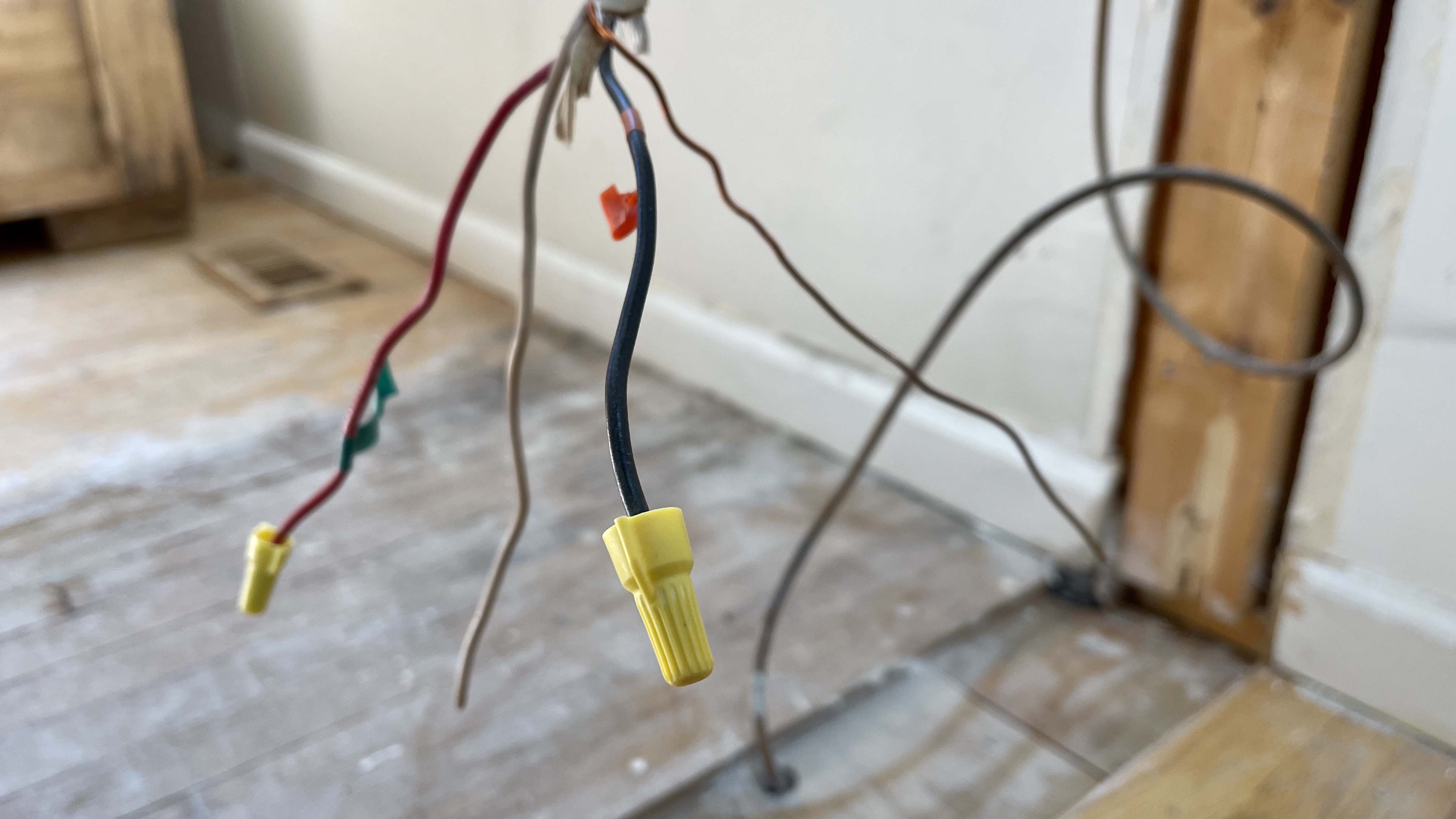DIY smart home: What’s a neutral wire and what to do if you don’t have one
Why you need to know about neutral wires before buying or installing a smart switch

This story is part of an ongoing DIY smart home series. Be sure to check out the latest installments to follow the renovation process from start to finish.
Disclaimer: Consult a licensed electrician for questions regarding to your home's circuitry, and be sure to refer to building codes before doing electrical work, which vary by location.
My spiral down the rabbit hole of rewiring my DIY smart home started with a seemingly simple question: “Does your house have a neutral wire?”
The folks from Brilliant Smart Home System wanted to know whether their aptly named smart control panel would work in my home. While I knew of electrical compatibility issues with older houses, I hadn’t considered whether mine had the proper wiring in place before ordering new smart switches.
In terms of a home’s power flow, the neutral wire provides a return path for currents essential to most modern U.S. electrical codes. Combined with a power source and ground wire, you have the makeup of a contemporary light switch, but earlier switches operate without the neutral. So when it comes to designing a smart home, a neutral wire can cause headaches if you don’t have one at your switch location. Or if you don’t know whether you have one, like me.
Most homes built after the 1980s have a neutral wire throughout the space, case closed. But my home was built right smack in the mid-1980s, meaning the wiring situation behind the walls could’ve gone either way — a quandary the Jetsons never suffered, I’m sure. So to answer Brilliant’s question and figure out if my decision to use smart switches instead of smart lights had backfired, we broke drywall.
We were met with a mess of wires I can only describe as a preschooler's art project. I was pretty sure the tangled yards of white wires meant we had a neutral wire running through our kitchen’s switches, but we still consulted an electrician to formulate a rewiring plan based on the devices we want in our soon-to-be 21st century smart home.

According to my Wiring 101 crash course — courtesy of a day spent shadowing said electrician — a lack of neutral wire in our switches wouldn’t have been the end of the world. But if you’re interested in any smart home devices that draw power directly from your electrical network (a.k.a not an outlet,) you’ll need to know if a) you have it and b) if the devices you want require it.
Get instant access to breaking news, the hottest reviews, great deals and helpful tips.
Neutral wire: How to tell if you have it, what to do if you don’t
The easiest way to determine whether you have neutral wires in your switches is to know when your house was built, or the last time it underwent a major renovation. If that happened after 1990, it’s most likely you have neutral wires running throughout your home. If that happened before 1980, it’s most likely that you don’t have the neutral wiring necessary for smart switches.
Things get less certain if your home was built in the 1980s. Not just an era of questionable hairstyles and John Hughes movies, the 80s were a transitional period for electrical standards. A New York Times article from 1985 titled “Home Improvement” is very telling of the changes as they related to new building code norms.
To check if you have a neutral wire, you can pop open a switch box in your home, if you know how to do so safely (you can also have an electrician come do it). If you see a white wire coming out of the gang box, you likely have a neutral wire.

If your switch box doesn’t have a neutral wire, you have two options. First, you can have an electrician install one. Our electrician claimed it’s not difficult work, but they’ll need to get behind your walls. Since we opened ours up for the renovation, it wouldn’t have been an issue to run a neutral wire for the devices I wanted.
The non-demolition option is to use any of the best smart light bulbs or use smart switches that work without a neutral wire. A few years ago, there weren’t many companies addressing the wiring discrepancies of older homes. But now you can find a fair selection of models that let you smarten up your space sans-neutral wire.
Neutral wire smart switch vs. no neutral wire smart switch
Several of the best smart switches still need a neutral wire to complete a given circuit and stay powered 24/7. The Brilliant smart home controller, for example, demands constant power to fulfill its role as a wall-mounted display to manage your collection of connected devices. A neutral wire also provides individual dimming functionality for the controller’s switches.
In addition to their neutral wire-needing smart switches, some brands have tried to offer more inclusive options to older homes. Cync (formerly C by GE) developed a 3-wire switch last year that works without the neutral wire, making it a good choice for anyone looking to limit the necessary electrical work for raising their home’s IQ.
The Lutron Caseta Wireless In-Wall Dimmer is another switch option for homes built in the pre-neutral wire era. However, to use its voice control capabilities with Alexa or Google Assistant (here’s why I went Alexa over Google Assistant) you’ll need to set up a separate Lutron bridge connected to your router like you might for Philips Hue lights.
Before you buy any smart switches, be sure to read the fine print. If you’re taking the DIY route like I am, review the installation instructions that are available from the retailers or product site ahead of time. The Brilliant team did me a solid by double-checking my home’s compatibility, but consider this a lesson learned.
Enjoy solving these DIY smart home puzzles with me? Stay tuned for the next installment of this series. In the meantime, e-mail me at kate.kozuch@futurenet.com or leave a comment below with anything you’d like to see me cover, whether it’s a how-to or buying decision you’re struggling to make. Be sure to check out my guides to the best smart home devices (and best cheap smart home devices), too.

Kate Kozuch is the managing editor of social and video at Tom’s Guide. She writes about smartwatches, TVs, audio devices, and some cooking appliances, too. Kate appears on Fox News to talk tech trends and runs the Tom's Guide TikTok account, which you should be following if you don't already. When she’s not filming tech videos, you can find her taking up a new sport, mastering the NYT Crossword or channeling her inner celebrity chef.
